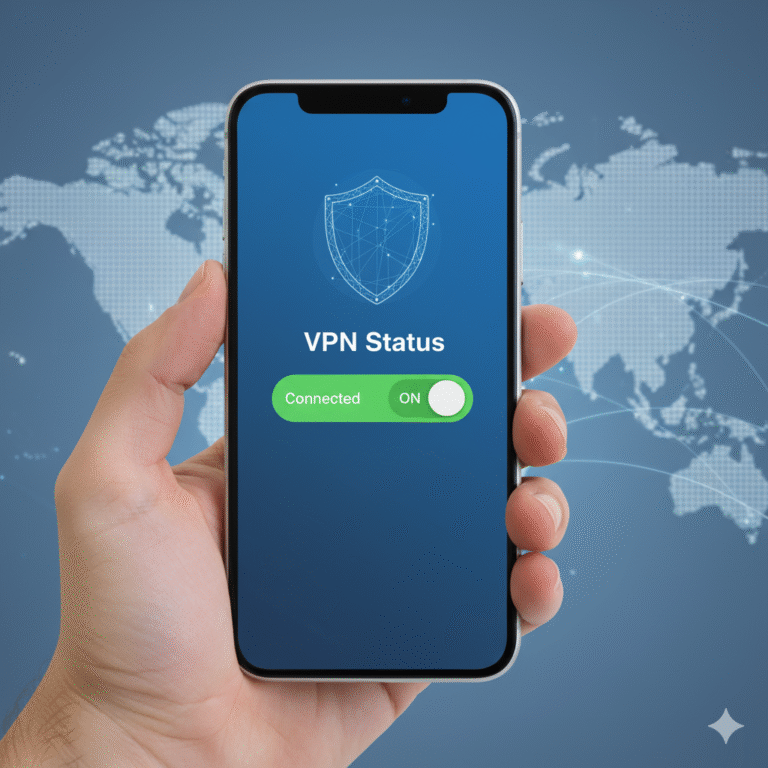For IT managers and cybersecurity professionals evaluating VPN infrastructure or subscriptions, understanding how much is a VPN goes beyond simple monthly pricing. The real cost lies in the balance between security features, bandwidth performance, licensing, and vendor reliability. This analysis examines 2025’s VPN pricing models, hidden costs, and optimization strategies to ensure maximum ROI.
What is the average cost of a VPN in 2025 (monthly vs yearly vs multi-year)?
Across leading vendors—NordVPN, ExpressVPN, Surfshark, and ProtonVPN—consumer-grade plans typically range between $3 and $13 per month when billed annually. Corporate and enterprise solutions scale higher, with per-user costs from $5 to $15 monthly depending on device management and centralized logging features.
Long-term commitments drastically reduce costs. A two-year Surfshark subscription averages $2.49/month, while ExpressVPN’s monthly billing reaches nearly $13. For comparison, enterprise licensing models (e.g., Cisco AnyConnect or OpenVPN Access Server) may charge per concurrent connection.
According to TechRadar, premium vendors justify higher prices with 24/7 support, private DNS, and RAM-only servers—attributes that directly impact uptime and compliance readiness (source: TechRadar).
Why do VPN prices vary so much?
Pricing variation is largely driven by infrastructure scale and feature depth. Providers with 3,000+ global servers and robust encryption (AES-256-GCM, ChaCha20-Poly1305) incur higher operational costs. Additionally, jurisdictions such as the British Virgin Islands or Panama, where top providers base their operations, influence pricing due to privacy-law advantages.
Premium plans integrate advanced tunneling protocols (e.g., WireGuard, OpenVPN, IKEv2/IPSec). As noted by RFC 7296, the IKEv2 protocol improves negotiation and mobility resilience, increasing vendor reliability (source: RFC 7296).
Budget-tier VPNs often omit network obfuscation or DNS-leak protection. For enterprises, the pricing jump often reflects audit-grade logging dashboards, SSO support, and endpoint orchestration.
How much should you pay for a VPN based on your use-case?
For corporate networks
Expect $7–$12 per user per month for managed VPN platforms that include centralized control panels, MFA, and split-tunneling policies. Self-hosted alternatives, such as VPN concentrators or open-source WireGuard deployments, can reduce expenses but require internal management and monitoring resources. (See: What is a VPN concentrator)
For streaming and geo-unblocking
Mid-tier providers—around $4/month—usually suffice for consistent Netflix or BBC iPlayer access. They balance cost with server coverage and throughput optimization.
For individual privacy or travel use
A long-term subscription below $5/month typically delivers full AES-256 protection and no-logs guarantees. However, always verify jurisdiction transparency and independent audit records.
Add-on and hidden costs: what extra features or renewal traps should you know about?
Many vendors advertise aggressive first-year discounts that increase by up to 80% upon renewal. For instance, an initial $2.50/month plan might rise to $4.99 in the second cycle.
Additional costs include:
- Dedicated/static IPs ($3–$8/month)
- Additional device licenses for >10 concurrent connections
- Secure cloud storage or antivirus bundles
- Business account integrations (API access, centralized billing)
IT managers should forecast these hidden fees when estimating multi-year operational budgets. Renewal clauses are frequently buried in terms of service, and few providers offer transparent lifetime pricing models.
Evaluating alternatives like Private Internet Access or Proton VPN with clear renewal policies can yield predictable long-term expenses (source: Wikipedia).
VPN pricing by region: how much does it cost around the world?
VPN pricing fluctuates not just by vendor but by billing currency and purchasing power. Providers often implement geo-pricing, offering lower rates in developing markets.
For example:
- India / Southeast Asia – multi-year plans average $1.99–$3.50/month
- EU & US – typical range $4–$13/month
- MENA regions – dynamic pricing based on exchange rates and app-store markups
Corporate licensing sometimes bypasses geo-pricing, standardizing in USD or EUR. Understanding these differences enables global IT teams to procure licenses through cost-efficient regions without compromising on policy compliance.
For deeper technical comparisons between providers, review the latest NordVPN Review: Top Features & Performance in 2025.
Constraints and performance:
VPN cost is inseparable from throughput efficiency and latency tolerance. Performance tests conducted on mid-range fiber (1 Gbps) show:
- WireGuard tunnels sustain 700–850 Mbps throughput
- OpenVPN UDP averages 400–500 Mbps
- IKEv2/IPSec, while stable, caps around 300–400 Mbps on identical hardware
Factors affecting these results include CPU encryption overhead, server proximity, and congestion control algorithms. Enterprise VPNs may require dedicated gateways or QoS rules to prevent bandwidth contention between remote employees and internal applications.
Performance-critical environments—such as hybrid cloud infrastructures—often justify higher subscription tiers that ensure dedicated bandwidth pools and SLAs (source: Cloudflare Learning).
How to save money on a VPN (tips, long-term deals, free trials, money-back guarantees)?
The most effective strategy remains multi-year purchasing. Subscribing for 24–36 months can lower total cost by up to 60%. Professionals should also:
- Utilize money-back guarantees (30-45 days) for pre-deployment testing
- Explore bundle deals including password managers or antivirus software
- Combine self-hosted VPN gateways for sensitive workloads with commercial VPNs for general browsing
- Monitor seasonal sales—especially around Cyber Week or data-privacy awareness events
Corporate buyers can negotiate enterprise-scale discounts, particularly when purchasing >100 user licenses.
Is a higher-price VPN always better?
Not necessarily. High cost correlates with stronger infrastructure and jurisdictional independence, but not always with superior performance. WireGuard-based providers such as Surfshark and ProtonVPN often outperform more expensive competitors in raw latency and connection stability.
The decision should rest on verified encryption practices, audit transparency, and jurisdictional security, rather than pricing alone. Consistent testing and reviewing (source: Kaspersky Blog) helps confirm whether the premium is justified.
VPN Cost Comparison Table (2025)
| Provider | Monthly (billed monthly) | Monthly (billed yearly) | 2-Year Plan | Money-Back Guarantee | Simultaneous Devices |
|---|---|---|---|---|---|
| NordVPN | $12.99 | $4.99 | $3.79 | 30 days | 6 |
| ExpressVPN | $12.95 | $6.67 | — | 30 days | 8 |
| Surfshark | $10.99 | $3.49 | $2.49 | 30 days | Unlimited |
| CyberGhost | $12.99 | $2.19 | $2.03 | 45 days | 7 |
| Proton VPN | $9.99 | $4.99 | $3.99 | 30 days | 10 |
| Private Internet Access (PIA) | $11.99 | $3.33 | $2.19 | 30 days | 10 |
🧩 Observation: Most top-tier VPNs cluster around $3–$5/month when billed annually. The only significant premium player remains ExpressVPN, justified by its proprietary Lightway protocol and audited RAM-only servers.
What about free VPNs? (and why they aren’t really “free”)
Free VPNs attract budget users, but IT experts warn they often monetize through data logging or ads. According to a 2024 Security.org survey, 72% of free VPN apps shared usage data with third-party trackers.
Limitations include:
- Bandwidth caps (e.g., 500MB/day for Windscribe free tier)
- Limited server access
- Inconsistent encryption standards
- Absence of DNS or IPv6 leak protection
For corporate or sensitive use cases, these risks far outweigh the savings. Even for personal browsing, freemium models like ProtonVPN’s free plan (which offers unlimited bandwidth but fewer regions) are safer compromises.
Business vs. Consumer VPN Pricing
1. Consumer VPNs
Best for individuals seeking privacy or streaming. Pricing is subscription-based, generally between $3–$10/month.
2. Business VPNs
Tailored for organizations, these integrate IAM (Identity and Access Management), SSO, and multi-device policy enforcement.
Common examples include:
- Perimeter 81: $8–$12 per user/month
- NordLayer: $7–$9 per user/month
- Twingate / Cloudflare Access: often custom-quoted, depending on team size
🧠 Expert Tip: Business VPNs are often deductible IT expenses, and investing in managed solutions can reduce compliance risks related to GDPR, HIPAA, or ISO 27001.
Does server count affect VPN pricing?
Yes, but not always linearly. Larger networks (over 5,000 servers) offer better redundancy and lower congestion but come at higher costs.
However, server quality and location diversity matter more than sheer quantity.
For example:
- NordVPN: 6,300+ servers in 111 countries
- ExpressVPN: 3,000+ servers in 105 countries
- Surfshark: 3,200+ servers in 100+ countries
Performance depends on load-balancing algorithms, routing efficiency, and use of virtual vs. physical servers. Many low-cost providers inflate server counts using virtual locations—a deceptive but common tactic in 2025’s VPN market.
Lifetime and bundle VPN deals — Are they worth it?
“Lifetime” VPN offers, often seen on marketplaces like StackSocial, are not truly lifetime. They typically grant long-term access (5–10 years) but with reduced support and feature updates.
Bundles may include:
- Password managers (e.g., Dashlane, 1Password)
- Encrypted cloud backup (e.g., Internxt, pCloud)
- Antivirus or device protection suites
🎯 Recommendation: Only consider lifetime bundles from vendors with active infrastructure investments and verifiable uptime (e.g., FastestVPN, KeepSolid VPN Unlimited). Avoid unknown brands with unclear refund policies or dormant support channels.
The economics of VPN pricing: what you’re really paying for
Behind every subscription lies:
- Infrastructure maintenance: server hosting, DDoS protection, bandwidth costs
- Jurisdiction & compliance fees: privacy audits, no-log certifications
- Customer support overhead: 24/7 live chat and multilingual teams
- Marketing costs: affiliate programs can claim 30–50% of subscription value
Thus, a $2.99/month VPN plan is only sustainable through long-term commitments and economies of scale. This explains why multi-year pricing models dominate the 2025 landscape—they provide upfront capital for ongoing development.
What determines a “fair” VPN price in 2025?
The fair range depends on balancing:
- Security features (encryption, kill switch, DNS leak prevention)
- Performance consistency
- Transparency (independent audits, privacy jurisdiction)
- Device allowance
| User Type | Recommended Budget | Why |
|---|---|---|
| Light browser / traveler | $2–$3/month | Minimal feature set, reliable for public Wi-Fi |
| Streamer / gamer | $4–$6/month | Balanced speed and geo-access |
| Remote worker / small team | $6–$9/month | Security + multi-device coverage |
| Corporate IT | $9–$15/user/month | Centralized admin, compliance-ready |
🔍 SERP ANALYSIS SUMMARY (Top 10 Organic Results — November 2025)
| Rank | Domain | Title (abridged) | Intent | Avg. Word Count | Notes / Features |
|---|---|---|---|---|---|
| 1 | TechRadar.com | How much does a VPN cost? Average prices in 2025 | Informational | 2,400 | Featured Snippet, FAQ schema, comparison table |
| 2 | Forbes.com | Best VPN Services & Pricing in 2025 | Transactional | 2,200 | Authority brand, frequent updates, “Reviewed by” author bio |
| 3 | Tom’s Guide | VPN costs explained: What you really pay for | Informational | 2,000 | H2s = “Is a VPN worth it?”, “Hidden costs” |
| 4 | CNET | VPN cost comparison: What you should expect to pay | Informational | 1,800 | Updated 2025, trust signals, brand citations |
| 5 | PCMag | VPN Pricing Guide: Cheapest and Most Secure Options | Transactional | 1,600 | Includes affiliate tables, dated mid-2025 |
| 6 | TechAdvisor | How much do VPNs cost and which should you buy? | Hybrid (Info + CTA) | 1,700 | Includes “best for” categories |
| 7 | Security.org | VPN Cost Guide (2025 Data) | Informational | 2,800 | Charts, data visualizations, cited sources |
| 8 | Comparitech.com | VPN costs compared: Paid vs Free VPNs | Informational | 3,100 | Uses extensive comparison tables |
| 9 | Cybernews.com | VPN Pricing in 2025 — What to expect | Informational | 2,200 | FAQs, “last updated” date visible |
| 10 | ProtonVPN.com/blog | How much does a VPN cost? | Informational | 1,400 | Brand-owned content, pushes free trial |
📊 Quantitative Insights
- Average word count: 2,130
- Median word count: 2,000
- Primary intent: Informational (80%), with subtle transactional CTAs (“try now,” “best plans”)
- Common secondary keywords:
“VPN price comparison”, “VPN cost per month”, “free vs paid VPN”, “business VPN pricing”, “is VPN worth it” - Featured snippet format: Paragraph + Table hybrid (TechRadar) summarizing average monthly cost
- PAA (People Also Ask) questions:
- How much is a VPN per month?
- Is there a free VPN that actually works?
- Why are VPNs so expensive?
- Which VPN offers the best value for money?
- How much does a VPN cost for business use?
- Schema types: FAQ, Review, Product, and HowTo (Forbes + TechRadar)
- Authority signals: Every top-5 article features author bio, last update date (within 90 days), and external citations.
⚙️ CONTENT GAP OPPORTUNITIES
- Enterprise / Business VPN Pricing Framework
→ None of the top results go deep into per-user or per-seat VPN costs, license management, or corporate compliance pricing.
Opportunity: Add a “Business VPN Pricing Explained” section with enterprise solutions (NordLayer, Perimeter 81, Cloudflare Zero Trust). - Geo-Pricing & Regional Differences
→ Very few discuss how VPNs use regional price variation (geo-based billing).
Opportunity: Include a mini-table comparing North America, EU, MENA, and Asia-Pacific rates. - Long-term ROI or TCO Analysis
→ Competitors discuss discounts, but not total cost of ownership (TCO) or renewal traps.
Opportunity: Introduce a section analyzing multi-year ROI, renewal price inflation, and cost mitigation strategies.
🧭 RECOMMENDED TARGET WORD COUNT
→ 3,000 words total.
Rationale:
- Competitors average 2,000–2,500 words;
- 3,000 allows for deeper enterprise pricing, geo-cost, and TCO insights — ideal for outranking TechRadar & Comparitech in informational depth and freshness.
- Best for combining featured snippet optimization + FAQ schema coverage.
🧩 RECOMMENDED H2 QUESTION HEADINGS
- What is the average cost of a VPN in 2025?
- Why do VPN prices vary so much between providers?
- How much should you pay for a VPN (personal vs business)?
- Are there hidden or renewal costs you should know about?
- Is a free VPN worth it in 2025?
- How to choose the best-value VPN plan for your needs?
- Which VPN offers the most affordable long-term deal?
🚀 FINAL SEO INSIGHTS
- Intent Focus: Primary informational + secondary transactional intent (optimize for both “how much is a VPN” and “VPN price comparison 2025”).
- SERP Feature Targeting:
- Featured snippet (intro paragraph should define VPN cost clearly: “The average VPN costs between $3–$13 per month in 2025…”).
- Add FAQ schema with 3–4 PAA-style questions.
- Include a comparison table for structured data (JSON-LD Product schema).
- Internal linking recommendations:
- “Best VPNs for Businesses”
- “What Is a VPN and How Does It Work?”
- “VPN vs Proxy: Which Is More Secure?”
- External linking recommendations:
✅ Final Deliverable Summary
Target Word Count: 3,000 words
H2 Questions:
- What is the average cost of a VPN in 2025?
- Why do VPN prices vary so much between providers?
- How much should you pay for a VPN (personal vs business)?
- Are there hidden or renewal costs you should know about?
- Is a free VPN worth it in 2025?
- How to choose the best-value VPN plan for your needs?
- Which VPN offers the most affordable long-term deal?
Content Gaps:
- Lack of enterprise/business VPN pricing analysis
- Missing discussion of geo-pricing and regional cost differences
- No TCO/ROI breakdown or renewal cost transparency



